Whether dramatic and memorable or discrete and somewhat secluded, the monuments of Belgrade remind us of people and events of importance to this city. Some of them have grown into city landmarks. Belgrade has 300 cultural monuments, 57 of those being of exceptional and grand importance to the culture of Serbia and Belgrade. The monuments of special importance are the Belgrade Fortress, the Cathedral Church, the Monument to the Unknown Hero on Avala, the monument marking the place of the death of Despot Stefan Lazarević (Crkvine at Mladenovac), the Graveyard of the Liberators of Belgrade, the Late Roman Tomb in Brestovik, the Adobe Church in Vranić, the Birth House of Vojvoda Stepa Stepanović, the Residence of Princess Ljubica and Captain Miša’s Mansion.

Author: Ivan Meštrović
Place: Belgrade Fortress
Set up in: 1928.
Meštrović initially designed a sculpture to be set up as part of the drinking fountain on Terazije in 1912, but the public was against having a nude male figure set up in the city centre. After World War I the project was cancelled and thus the Victor was set up on Kalemegdan in 1928 and came to represent a symbol of Belgrade.
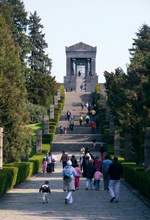
Author: Ivan Meštrović
Place: Avala
Set up in: 1938.
Monuments to unknown heroes were erected in all allied countries during the years after World War I, and Yugoslavia joined in this endeavour. The monument was built for four years and it holds the remains of an unknown hero. It is shaped like a sarcophagus on a plinth with six steps. Caryatids line the sides, symbolizing an honour guard.
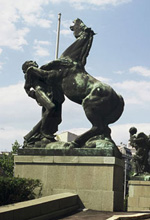
Author: Toma Rosandić
Place: Kralja Aleksandra Boulevard
Set up in: 1938.
Composition ''Black Horses at Play'' created in bronze and placed in front of the Serbian Assembly. It is the work of the famous sculptor Toma Rosandića. Thus, the playful horses came before the Board Rosandića 1938th years and today there are the eternal watch. For this sculpture are two related anecdotes. The first is actually a joke, which is told in Belgrade that the two sculptures of the poetic names do not mean just the game and the struggle between man and nature, but to a man who symbolizes the horse, and it will tell MPs, without any resistance introduced in the Assembly, and other shows wild horses that are trying hard to man out of the Assembly. Other stories, recent, says that someone from Croatia, when the "big Yugoslavia" broke up, raised the question that these two sculptures returned Croatia, because from there and came to Belgrade.

Author: Milenko Mandić
Place: Andrićev Venac
Set up in: 1992.
The monument to the greatest Serbian and Yugoslav writer of the 20th century, the Nobel Prize winner for literature, is located at a salient of the Pioneer Park, near the building of the Presidency of Serbia. As a sign of respect and in memory of the long-time fellow citizen, the monument was erected by the Ivo Andrić Foundation, the City of Belgrade and the Republic of Serbia to mark the one hundred year anniversary of the birth of our Nobel Prize winning author. Ivo Andrić (1892-1975, Nobel Prize winner for literature in 1961). Completed the gymnasium in Sarajevo, studied in Zagreb, Vienna, Krakow and Graz, received his doctorate in Graz. Member of the diplomatic corps between the two world wars. A writer with a strong imagination and exquisite familiarity with the historical environment of old Bosnia, which forms the subject of most of his work. Initially published poems, later to transition to stories and novels.

Author: Enrico Pazzi
Place: Republic Square
Set up in: 1882.
Mihailo Obrenović (1823-1868, Prince of Serbia). The son of Prince Miloš and Princess Ljubica, he first came into power following the death of his elder brother Milan (1839). The sultan confirmed him to be an elected, but not a hereditary prince. Toma Vučić initiated an uprising in August 1842 and forced him into exile, bringing Alexander Karageorgevich to the throne. He spent six years outside the country and during this time assisted many Serbs working in literature (Vuk Karadžić, Đura Daničić, Branko Radičević and others). When Miloš returned to Serbia in 1858 Mihailo accompanied him and took over high command over the army. Regained the throne once more after the death of Prince Miloš in 1860. Established a national army with approximately 50,000 soldiers in 1861, aiming to finally rid Serbia of the Turks. Expecting war with Turkey he made alliances and agreements with other Balkan states – Montenegro, Greece, Bulgaria and Romania. Having finalized the preparations for war, he was assassinated during a walk in Košutnjak in 1868.
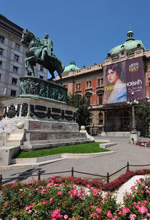
Address: 1a Republic Square
Open: Tuesdays, Wednesdays and Fridays 10:00-17:00
Thursdays and Saturdays 12:00-20:00
Sundays 10:00-14:00
closed on Mondays
Phone number: +381 11 33 06 048
Accessible to persons with disabilities
The oldest of museum institutions in Belgrade was founded in 1844 at the initiative of the Serb writer Jovan Sterija Popović. The founding of the National Museum coincides with the rise of the civic culture and the establishment of the state institutions of the Principality of Serbia. The National Museum in Belgrade, a complex type museum, is the most significant, oldest and central museum of Serbia containing 34 archaeological, numismatic and historical collections at this moment, after 160 years of growth and development. The museum collections contain over 400,000 archaeological and historical-artistic items, key mementos for archaeology and the history of art, representing the development and civilisation changes within the region of contemporary Serbia and its nearest surroundings, as well as key artistic directions and styles, pinnacles of artistic achievement in the national and European art world from the medieval period to modern times. Some example of the unique exhibits are the sculptures from Lepenski vir (7th millennium B.C.), Vincian statues (6-5th millennium B.C.), a shed from Jabučje (1st century A.D.), Belgrade Camea (4th century), coins of King Radoslav (13th century), medieval icons and frescoes, a bowl from Vraćevšnica (17th century), paintings by Paja Jovanović (19th century) or Sava Šumanović (20th century). The National Museum also holds the Gospel of Miroslav (“Miroslavljevo Jevanđelje“) from the 12th century, the most valuable artefact of Serb culture, officially declared the most beautiful Cyrillic manuscript in the world and a cultural treasure placed, along with the archive of the Museum of Nikola Tesla, under the protection of the UNESCO program “Memories of the World”.
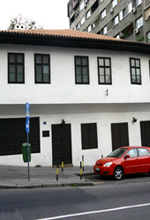
Address: 10 Kraljevića Marka Street
Open: Tuesdays-Saturdays 10:00-17:00
Sundays 09:00-13:00
closed on Mondays
Phone number: +381 11 30 36 114
Manak’s House is an integral part of the Ethnographic Museum, an example of old Balkan urban architecture, housing a particularly significant and valuable ethnographic memorial collection by Hristifor Crnilović. The collection contains approximately 2,600 items, mostly costumes and jewellery of immense cultural value. The costumes hail from the regions of South Serbia, Kosovo, Metohija and Macedonia. The collection is completed by examples of embroidery, textiles, towels, bags, carpets from Pirot and household items. The jewellery is particularly valuable, especially the jewellery worn on the head: diadems, head-scarves, tepeluks, pins, earrings, combs and necklaces.
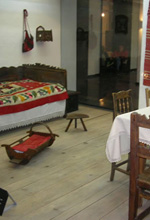
Address: 13 Studentski trg
Open: 10:00-17:00
Sundays 09:00-14:00
closed on Mondays
Website: www.etnografskimuzej.rs
Phone number: +381 11 32 81 888
Accessible to persons with disabilities
The Ethnographic Museum houses a large number of ethnographic items, divided into separate exhibits (household items, jewellery, customs, national costumes, national architecture, economy, stock farming, transportation, cultural artefacts), along with one of the best equipped professional libraries in the Balkans. The permanent exhibit takes up three levels of the building. The first floor represents the popular assembly, the second is related to textile production and the third is about the culture of living. The symbol of the museum is the Dečanska Fountain, located at its centre.
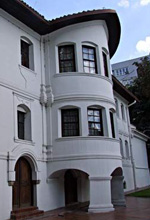
Address: 8 Kneza Sime Markovića
Open: Tuesdays, Wednesdays, Fridays, Saturdays 10:00-18:00
Thursdays 12:00-20:00
Sundays 10:00-14:00
closed on Mondays
Website: www.mgb.org.rs
Phone number: +381 11 26 38 264
Located in the very heart of Belgrade, on Kosančićev Venac. The Residence of Princess Ljubica was erected on orders by Prince Miloš Obrenović in 1831, as the private residence of his wife, the Princess Ljubica. The architecture and placement of rooms represent an example of the Balkans style, with a number of western baroque elements. The Residence houses the permanent exhibit “Interiors of Belgrade City Houses of the 19th Century” starting with the Oriental (Turkish), through the influence of Central (Biedermeier) and Western European (Neo-baroque, Neo-rococo, Napoleon III, Altdeutch) styles. The arched hall in the Residence basement is an exquisite ambiental locale where the Museum of the City of Belgrade organizes exhibits, lectures, music performances and promotions.
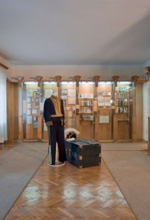
Address: 8 Andrićev Venac
Open: Tuesdays, Wednesdays, Fridays, Saturdays 10:00-18:00
Thursdays 12:00-20:00
Sundays 10:00-14:00
closed on Mondays
Website: www.mgb.org.rs
Phone number: +381 11 32 38 397
The museum preserves the memory of the Nobel Prize winning author Ivo Andrić. Part of the authentic ambient showing the everyday life of the writer is preserved, and various exhibits present the life of Andrić, as well as important stages in his creative biography. In addition to representative documents (student’s cards, passports, certificates, diplomas, the Nobel Prize and medal, Vuk’s Awards, honorary doctorates) and photographs, the exhibit also displays original manuscripts of Andrić’s work, letters, various editions of books in local and foreign languages, as well as his personal effects.
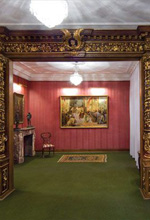
Address:
Open: visits by appointment at +381 11 26 30 462
Website: www.mgb.org.rs
Phone number: +381 11 33 40 176
The Museum of Paja Jovanović is of a memorial type, located in an apartment of an old multi-story building in one of the main streets of Belgrade. The famous actor bequeathed the Museum a number of his works while still living, from initial sketches to representative portraits and historical compositions. The museum contains a partial reconstruction of his Vienna atelier with pieces of period furniture, along with painting tools, personal documents, diplomas and medals, notes and memories of the artist, a set of his letters and a photo library of most of his works.
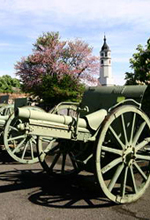
Address: Belgrade Fortress bb
Open: 10:00-16:00
closed on Mondays
Website: www.muzej.mod.gov.rs
Phone number: +381 11 33 43 441
The Military Museum in Belgrade is located within the Belgrade Fortress complex. Founded in 1878, it was first open to the public in 1904. It consists of a diverse collection of weapons and military equipment from various historical epochs, prehistory to modern times, with uniforms, national banners, flags and medals, as well as artistic paintings from the 17th to the 20th century.Among the more interesting items are Turkish lances and the armour of a Turkish vizier from the battle of Kosovo, a collection of old weapons, war banners and uniforms (including the uniform of King Alexander Karageorgevich, assassinated in 1934 in Marseilles), as well as a collection of medals of national heroes from World War II. An additional open-air attraction in the area surrounding the museum (the wall and moat of the Fortress) are the exhibited cannons from the 18th and 19th century, armoured weapons from the two world wars, antiaircraft and ship cannons, partisan boats...
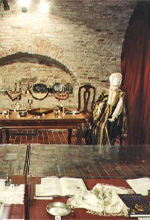
Address: 71a/I Kralja Petra I
Open: 10:00-14:00
closed on Saturdays and Sundays
Website: www.jimbeograd.org
Phone number: +381 11 26 22 634
The building housing the Jewish History Museum was erected in 1928 for the needs of the Jewish Sephardic Municipality in Belgrade. The German Kulturbund was located in the building during World War II. The museum is currently located on the first floor. Through items, documents and photographs, this museum preserves the history of the 2,000 years of Jewish presence on the territory of the former Yugoslavia. It contains depictions of synagogues, graveyards, customs, the history of Jewish municipalities, Jewish societies and schools, notable persons and the holocaust.
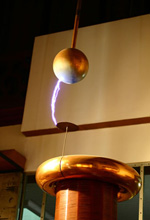
Address: 51 Krunska Street
Open: 10:00-18:00
Saturdays, Sundays 10:00-15:00
closed on Mondays
Website: www.tesla-museum.org
Phone number: +381 11 24 33 886
The museum preserving the complete heritage of the greatest Serbian scientist and inventor Nikola Tesla is located in the heart of Belgrade, in a beautiful residential villa built in 1929, designed by the notable Serbian architect Dragiša Brašovan. In accordance with Tesla’s last will and testament, his heritage was moved to Belgrade in 1951. The permanent exhibit consists of the original documents, books, magazines, plans and drawings of the greatest Serbian inventor. This is an extremely valuable collection containing over 160,000 original documents, 2,000 books and magazines, 1,200 historical and technical items, 1,500 photographs and glass photoplates, original technical items, instruments and devices, 1,000 plans and drawings.
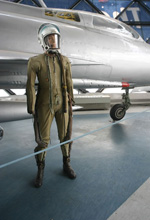
Address: “Nikola Tesla” airport, Surčin
Open: 09:00-18:30 (summers)
09:00-16:00 (winters)
closed on Mondays
Website: www.aeronauticalmuseum.com
Phone number: +381 11 26 70 992
The Museum of Aviation was founded in 1957 with the intent of preserving material evidence of importance for the birth and development of aeronautics in this region. The attractive museum building is located on the plateau of the “Nikola Tesla” Airport and contains over 200 aircraft, 130 aircraft engines, several radars and rockets, aeronautical equipment, 20,000 books and over 200,000 photographs in its collections and funds.
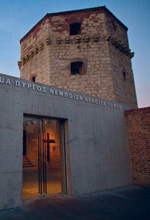
Address: Bulevar vojvode Bojovića
Open: 10:00-20:00 (June – September)
10:00–18:00 (October – May)
closed on Mondays
Website: www.kulanebojsa.rs
In the annex of the Nebojša Tower the history of the Tower as a military facility that has been, ever since its construction around 1460, a part of the defensive system of the city. The exhibition on the ground floor is devoted to the history of Nebojša Tower as a prison, while the one on the first floor is dedicated to personality of Rigas Feraios, a great Greek poet and a revolutionary who died in the prison of the Tower. The topic of the exhibition on the second level is the First Serb Upraising and the creation of the modern Serbian state at the beginning of the 19th century. On the topmost level of Nebojša Tower the history of Belgrade in the first decades of the 19th century is presented, as well as the process of transformation of the Oriental town into a modern European city.
The theatres of Belgrade are of the repertoire type, meaning that each night a different show is playing at the twenty-odd theatres around the city, providing plenty of choice.
The theatre season lasts from October to June and if you know the play you choose to see, language will not represent an issue. Should you find yourself in Belgrade in September, make sure to reserve a ticket for BITEF, the world-renowned Belgrade International Theatre Festival with guests from the most interesting troupes and theatres of today.
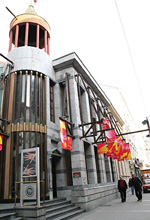
Plays by contemporary domestic and foreign writers in striking adaptations.
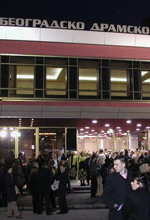
Classical and avant-garde dramatic works.
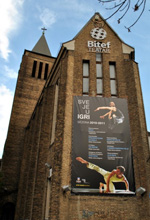
Alternative theatre projects, modelled on the festival of the same name.
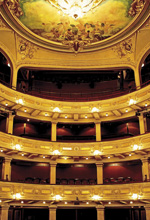
Classical repertoire, as befits an institution of national importance; besides the Drama Company there is also an Opera and a Ballet Company.

Imaginative interpretations of classical and newer works by domestic and world playwrights.
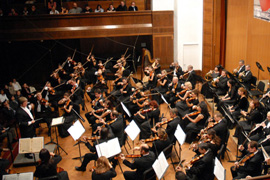
Founded in 1969, the Belgrade Music Festival – BEMUS is the oldest and the most prominent music festival in Serbia and one of the most distinctive classical music festivals in the South-Eastern Europe.
Apart from the well established performers, BEMUS opens its venues to young musicians who are ready to launch their professional careers. Equal attention is committed to exclusive contemporary music and stage productions (operas, ballets and multimedia projects) which often reach for alternative artistic achievements.
For additional information about visit website of Tourist Organization of Belgrade: www.tob.rs.
site map | Copyright © 2026 University of Belgrade. All rights reserved. | webmaster: icub@rect.bg.ac.rs